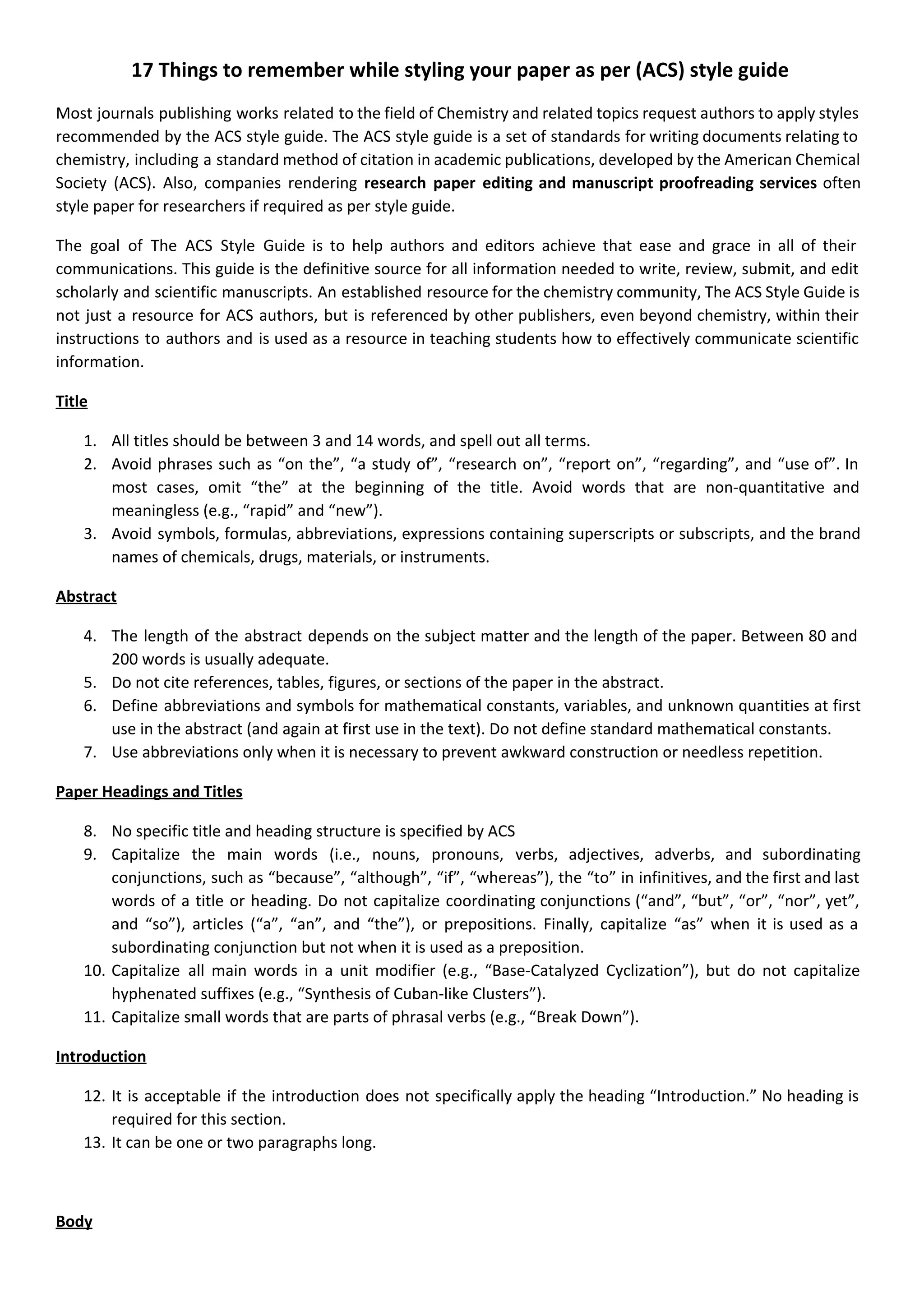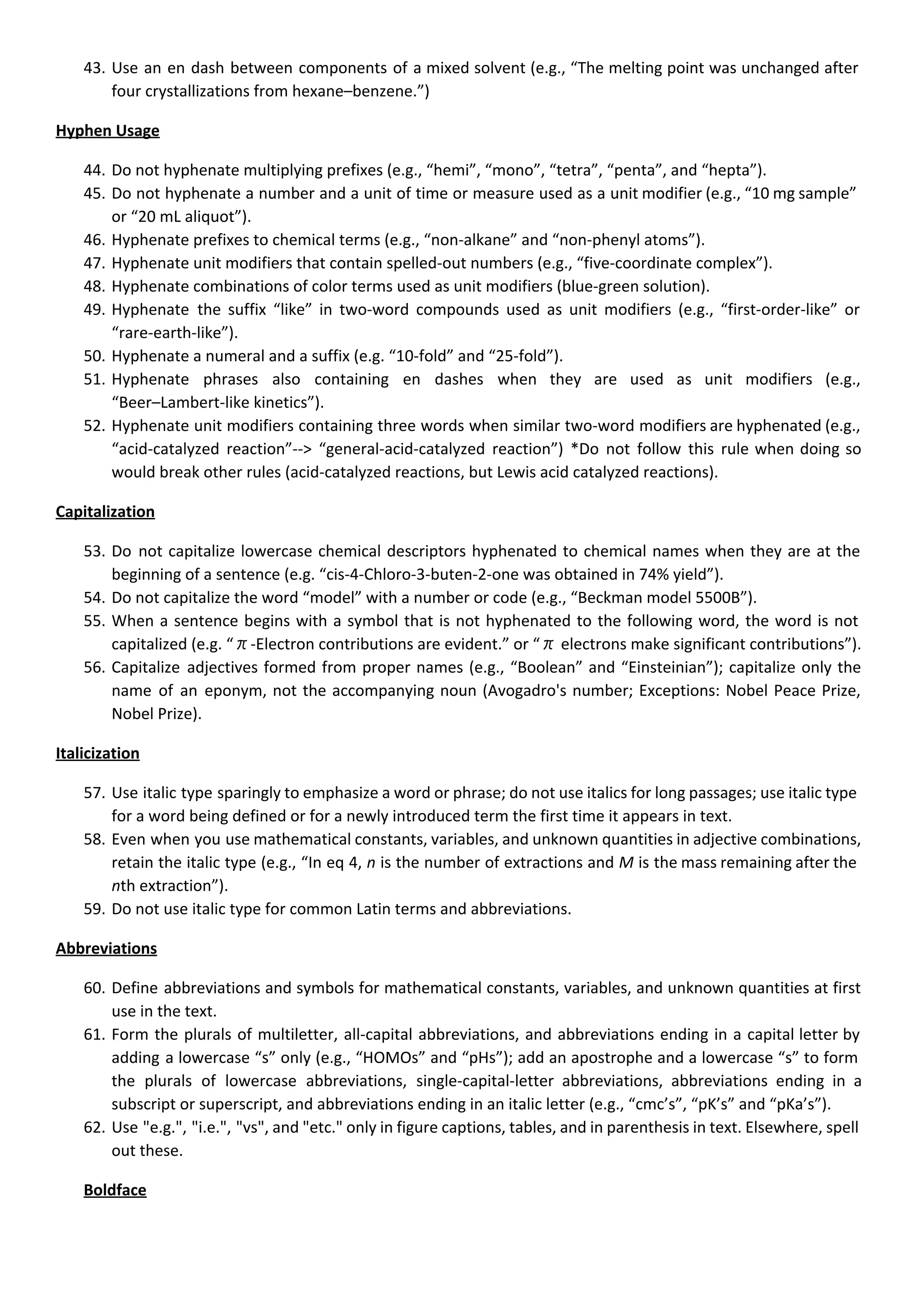The document outlines the ACS style guide for writing and formatting documents in the field of chemistry, providing standards for citations, headings, abstracts, and various stylistic elements. It includes specific guidelines on title structure, in-text citations, figures, tables, units, numbers, mathematical notations, and the usage of hyphens and en dashes, among others. This guide is meant to ensure clarity and consistency in scholarly communication within the chemistry community.




